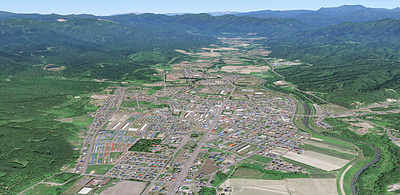Mikasaite
A valid IMA mineral species
This page is currently not sponsored. Click here to sponsor this page.
About Mikasaite
Formula:
Fe2(SO4)3
Colour:
White to light brown
Lustre:
Dull
Hardness:
2
Specific Gravity:
3.06 (Calculated)
Crystal System:
Trigonal
Name:
Named for Mikasa City, Japan near the type locality.
A sublimation formed from coal-gas escape; gas temperature was 307°C (Mineral. Rec. 27, 203). The Fe analogue of millosevichite.
A monoclinic dimorph is known as a synthetic phase.
A monoclinic dimorph is known as a synthetic phase.
Unique Identifiers
Mindat ID:
2709
Long-form identifier:
mindat:1:1:2709:6
GUID
(UUID V4):
(UUID V4):
993d888b-f4b5-403d-8091-af7d9919f94e
Classification of Mikasaite
Approved
First published:
1994
Type description reference:
7.AB.05
7 : SULFATES (selenates, tellurates, chromates, molybdates, wolframates)
A : Sulfates (selenates, etc.) without additional anions, without H2O
B : With medium-sized cations
7 : SULFATES (selenates, tellurates, chromates, molybdates, wolframates)
A : Sulfates (selenates, etc.) without additional anions, without H2O
B : With medium-sized cations
28.4.5.2
28 : ANHYDROUS ACID AND NORMAL SULFATES
4 : Miscellaneous
28 : ANHYDROUS ACID AND NORMAL SULFATES
4 : Miscellaneous
Mineral Symbols
As of 2021 there are now IMA–CNMNC approved mineral symbols (abbreviations) for each mineral species, useful for tables and diagrams.
| Symbol | Source | Reference |
|---|---|---|
| Mik | IMA–CNMNC | Warr, L.N. (2021). IMA–CNMNC approved mineral symbols. Mineralogical Magazine, 85(3), 291-320. doi:10.1180/mgm.2021.43 |
Physical Properties of Mikasaite
Dull
Comment:
Semitransparent
Colour:
White to light brown
Streak:
White to light brown
Hardness:
2 on Mohs scale
Density:
3.06 g/cm3 (Calculated)
Optical Data of Mikasaite
Type:
Uniaxial (+)
RI values:
nω = 1.504(2) nε = 1.518(3)
Max Birefringence:
δ = 0.014

Image shows birefringence interference colour range (at 30µm thickness)
and does not take into account mineral colouration.
and does not take into account mineral colouration.
Surface Relief:
Low
Chemical Properties of Mikasaite
Formula:
Fe2(SO4)3
IMA Formula:
Fe3+2(SO4)3
Elements listed:
Common Impurities:
Mn
Crystallography of Mikasaite
Crystal System:
Trigonal
Class (H-M):
3 - Rhombohedral
Space Group:
R3
Cell Parameters:
a = 8.14(1) Å, c = 21.99(8) Å
Ratio:
a:c = 1 : 2.701
Unit Cell V:
1,261.84 ų (Calculated from Unit Cell)
Z:
6
Crystal Structure
Load
Unit Cell | Unit Cell Packed
2x2x2 | 3x3x3 | 4x4x4
Unit Cell | Unit Cell Packed
2x2x2 | 3x3x3 | 4x4x4
Show
Big Balls | Small Balls | Just Balls | Spacefill
Polyhedra Off | Si Polyhedra | All Polyhedra
Remove metal-metal sticks
Big Balls | Small Balls | Just Balls | Spacefill
Polyhedra Off | Si Polyhedra | All Polyhedra
Remove metal-metal sticks
Display Options
Black Background | White Background
Perspective On | Perspective Off
2D | Stereo | Red-Blue | Red-Cyan
Black Background | White Background
Perspective On | Perspective Off
2D | Stereo | Red-Blue | Red-Cyan
View
CIF File Best | x | y | z | a | b | c
CIF File Best | x | y | z | a | b | c
Rotation
Stop | Start
Stop | Start
Labels
Console Off | On | Grey | Yellow
Console Off | On | Grey | Yellow
Data courtesy of the American Mineralogist Crystal Structure Database. Click on an AMCSD ID to view structure
| ID | Species | Reference | Link | Year | Locality | Pressure (GPa) | Temp (K) |
|---|---|---|---|---|---|---|---|
| 0010786 | Mikasaite | Christidis P C, Rentzeperis P J (1976) The crystal structure of rhombohedral Fe2(SO4)3 Zeitschrift fur Kristallographie 144 341-352 |  | 1976 | 0 | 293 |
CIF Raw Data - click here to close
X-Ray Powder Diffraction
Powder Diffraction Data:
| d-spacing | Intensity |
|---|---|
| 3.56 Å | (100) |
| 5.99 Å | (28) |
| 4.35 Å | (23) |
| 2.97 Å | (20) |
| 2.72 Å | (20) |
| 2.64 Å | (11) |
| 2.35 Å | (7) |
Comments:
Ikushunbetsu, Japan. Data from the type description.
Geological Environment
Paragenetic Mode(s):
| Paragenetic Mode | Earliest Age (Ga) |
|---|---|
| Stage 10b: Anthropogenic minerals | <10 Ka |
| 54 : Coal and other mine fire minerals (see also #51 and #56) |
Type Occurrence of Mikasaite
General Appearance of Type Material:
Aggregates of porous spherical crystals.
Place of Conservation of Type Material:
Department of Geology and Mineralogy, Faculty of Science, Hokkaido University, Sapporo, Japan.
Geological Setting of Type Material:
From fracture near burning coal seam.
Reference:
Miura, H., Niida, K., Hirama, T. (1994) Mikasaite, (Fe3+,Al)2(SO4)3, a new ferric sulphate mineral from Mikasa city, Hokkaido, Japan. Mineralogical Magazine: 58: 649-653.
Synonyms of Mikasaite
Other Language Names for Mikasaite
Related Minerals - Strunz-mindat Grouping
| 7.AB. | Dravertite | CuMg(SO4)2 |
| 7.AB. | Dagenaisite | Zn3Te6+O6 |
| 7.AB. | Andymcdonaldite | Fe2TeO6 |
| 7.AB.05 | Millosevichite | Al2(SO4)3 |
| 7.AB.05 | Koryakite | NaKMg2Al2(SO4)6 |
| 7.AB.10 | Chalcocyanite | CuSO4 |
| 7.AB.10 | Zinkosite | ZnSO4 |
| 7.AB.15 | Hermannjahnite | CuZn(SO4)2 |
| 7.AB.25 | Ottoite | Pb2TeO5 |
| 7.AB.55 | Mcalpineite | Cu3(Te6+O6) |
Other Information
Notes:
Deliquescent, dissolving in adsorbed water.
Health Risks:
No information on health risks for this material has been entered into the database. You should always treat mineral specimens with care.
Internet Links for Mikasaite
mindat.org URL:
https://www.mindat.org/min-2709.html
Please feel free to link to this page.
Please feel free to link to this page.
Search Engines:
External Links:
Mineral Dealers:
References for Mikasaite
Reference List:
Localities for Mikasaite
Locality List
 - This locality has map coordinates listed.
- This locality has map coordinates listed.
 - This locality has estimated coordinates.
ⓘ - Click for references and further information on this occurrence.
? - Indicates mineral may be doubtful at this locality.
- This locality has estimated coordinates.
ⓘ - Click for references and further information on this occurrence.
? - Indicates mineral may be doubtful at this locality.
 - Good crystals or important locality for species.
- Good crystals or important locality for species.
 - World class for species or very significant.
(TL) - Type Locality for a valid mineral species.
(FRL) - First Recorded Locality for everything else (eg varieties).
- World class for species or very significant.
(TL) - Type Locality for a valid mineral species.
(FRL) - First Recorded Locality for everything else (eg varieties).
All localities listed without proper references should be considered as questionable.
Germany | |
| |
Hungary | |
| |
Japan (TL) | |
| |
Lebanon | |
| |
Poland | |
| |
| |
Russia | |
|
Quick NavTopAbout MikasaiteUnique IdentifiersClassification Mineral SymbolsPhysical Properties Optical Data Chemical Properties Crystallography Crystal StructureX-Ray Powder DiffractionGeological EnvironmentType Occurrence SynonymsOther LanguagesStrunz-MindatOther InformationInternet Links References Localities Locality List








 symbol to view information about a locality.
The
symbol to view information about a locality.
The 



Ikushunbetsu, Mikasa City, Sorachi Subprefecture, Hokkaidō Prefecture, Japan